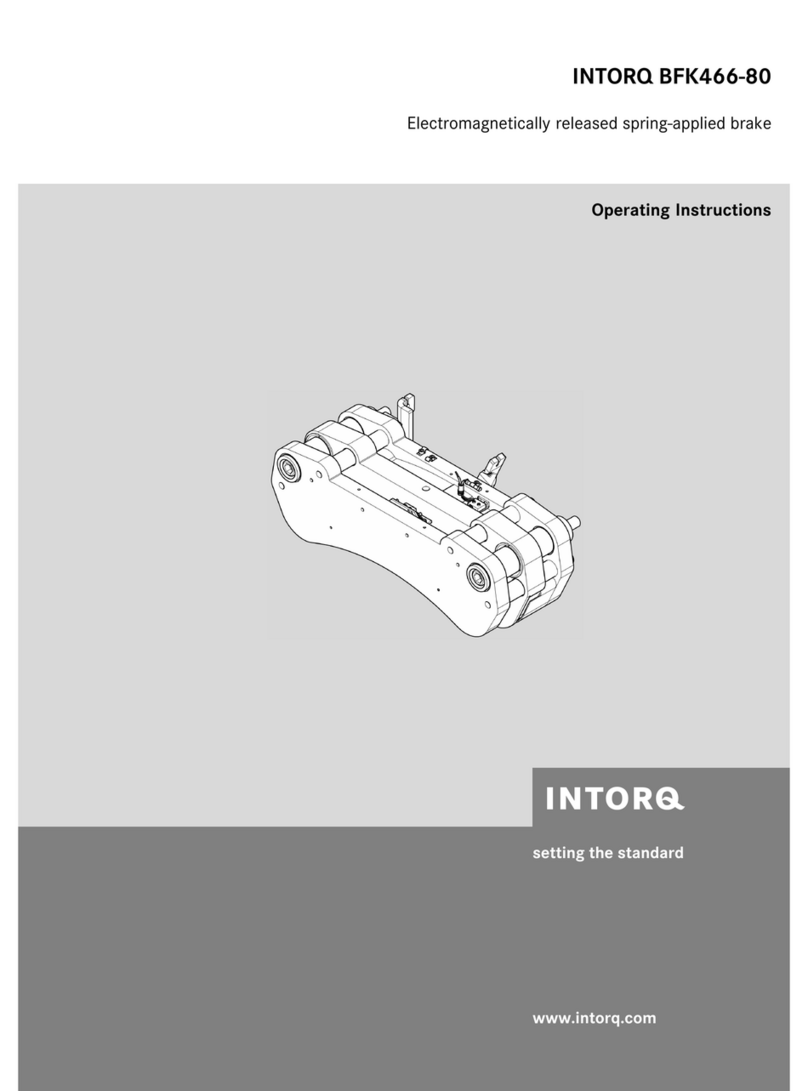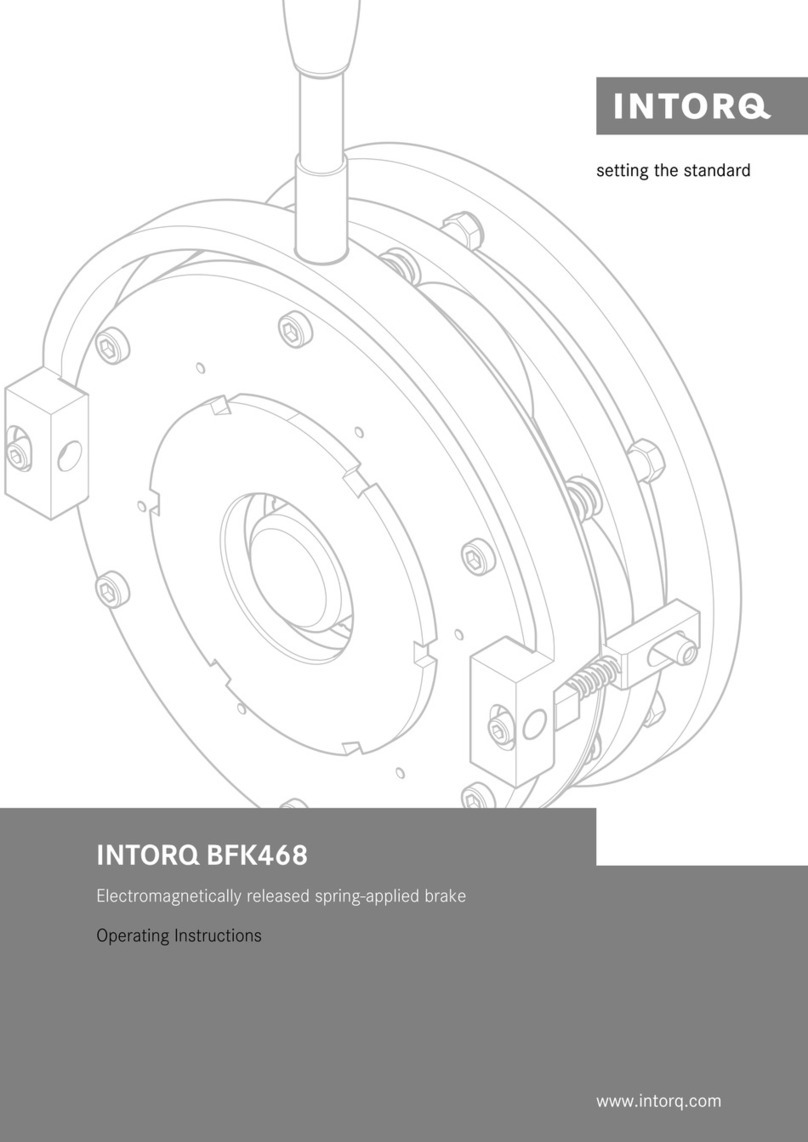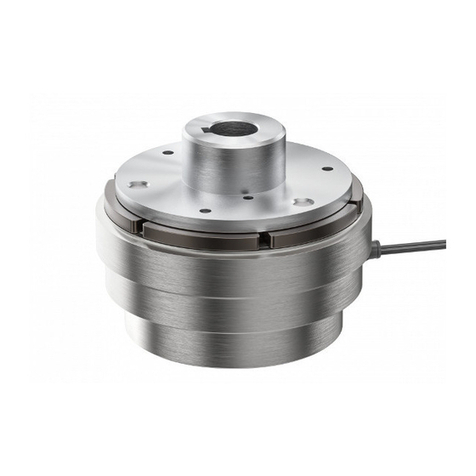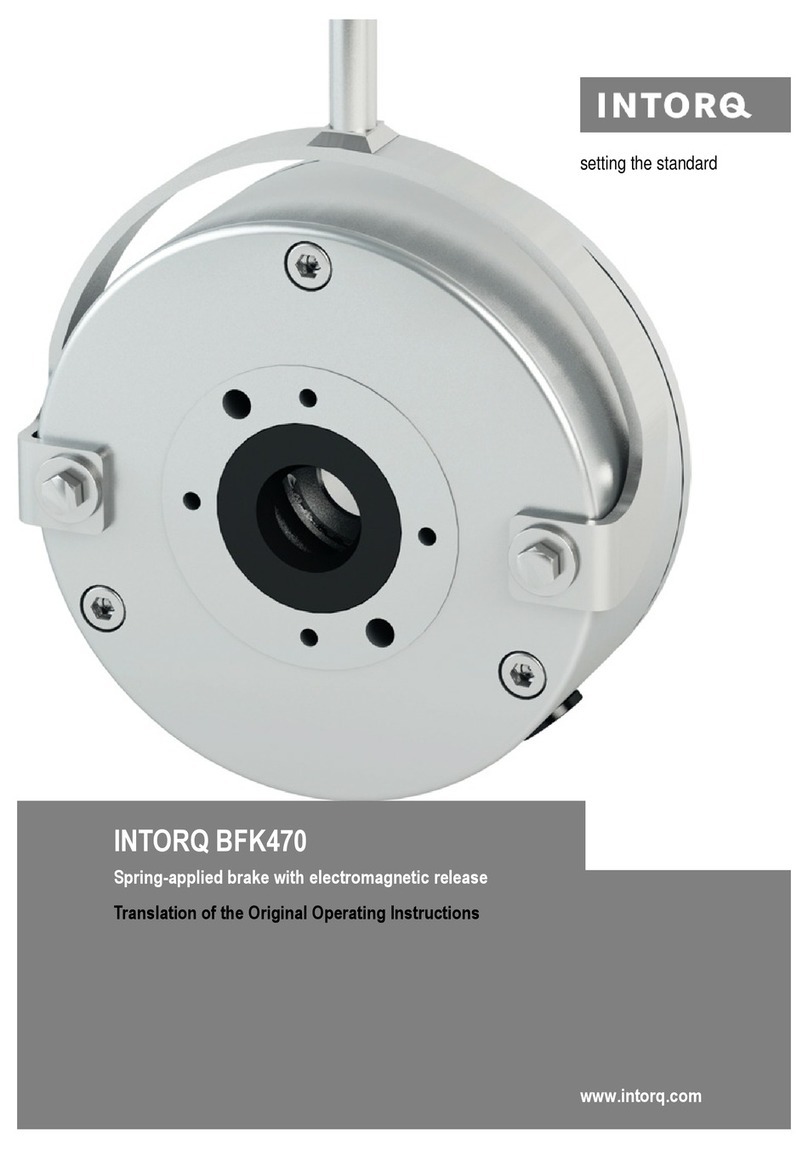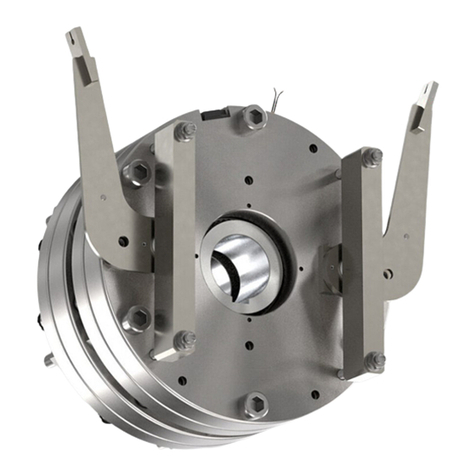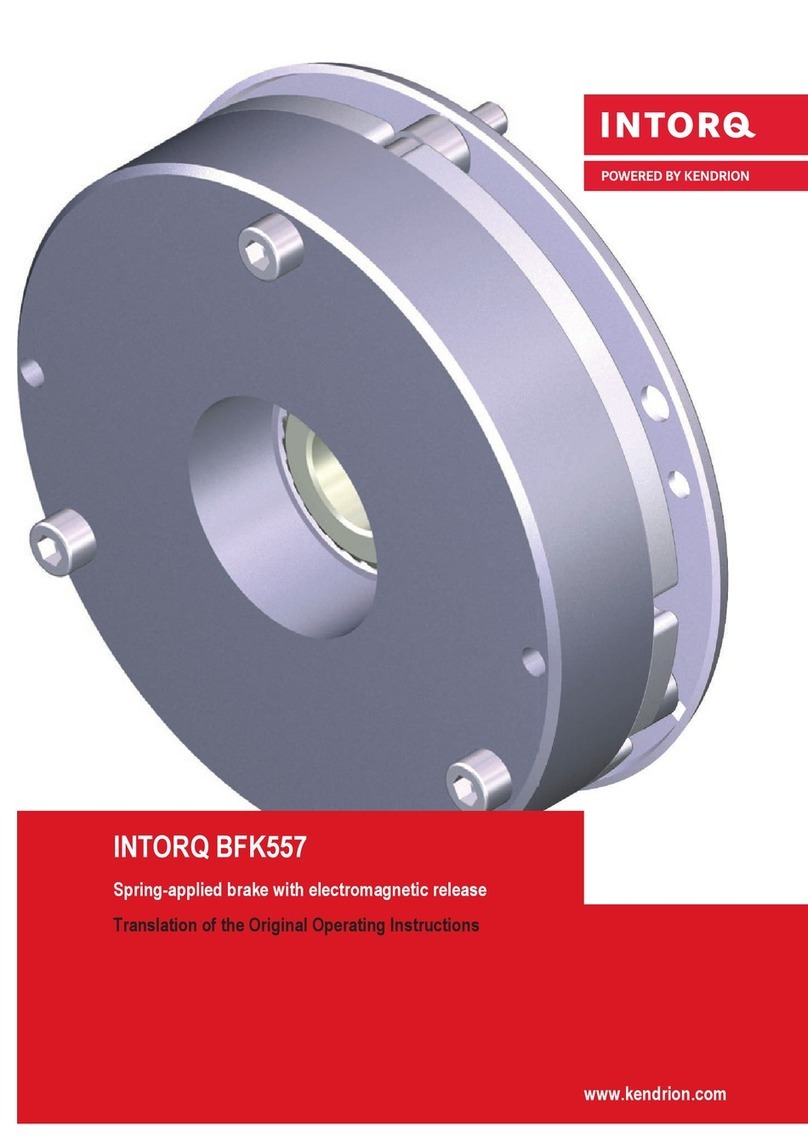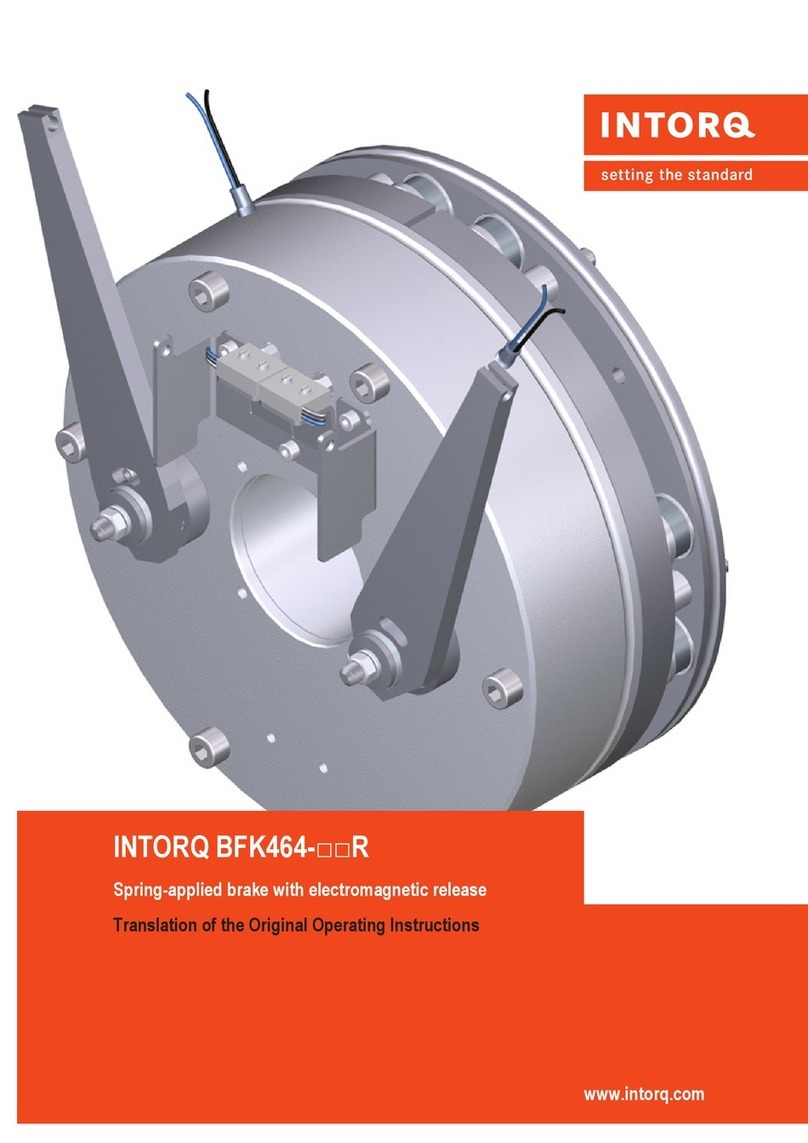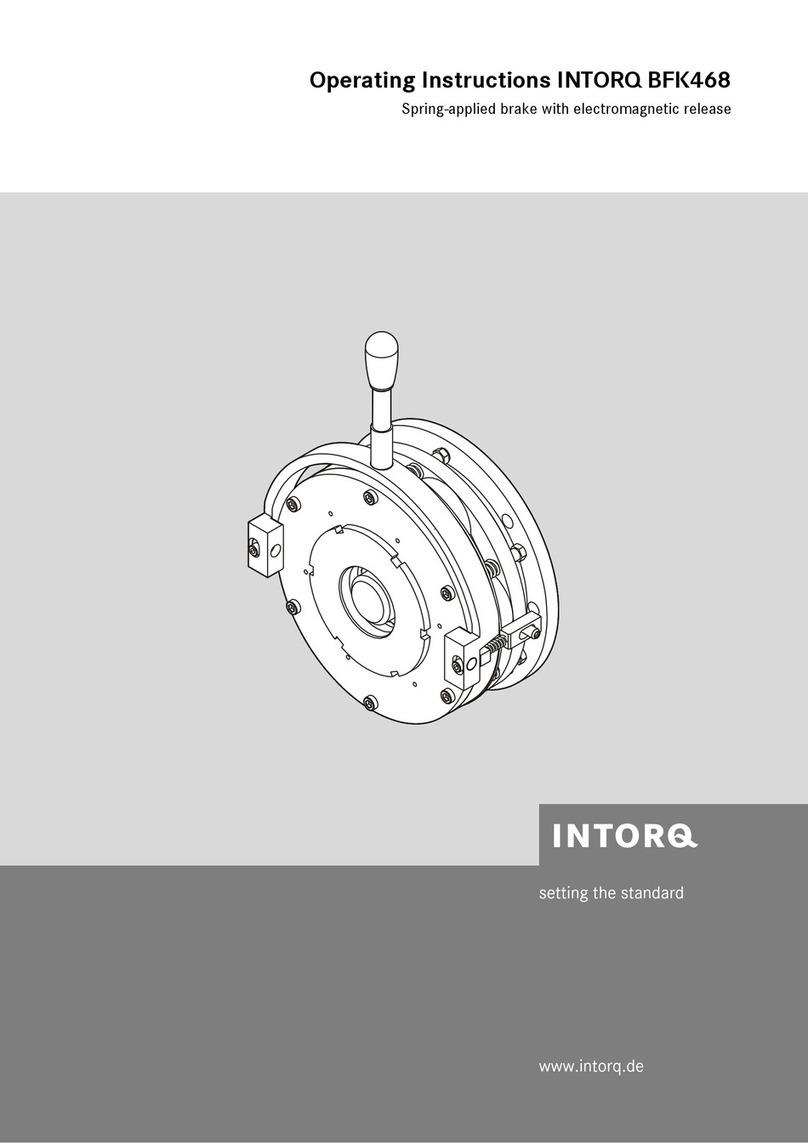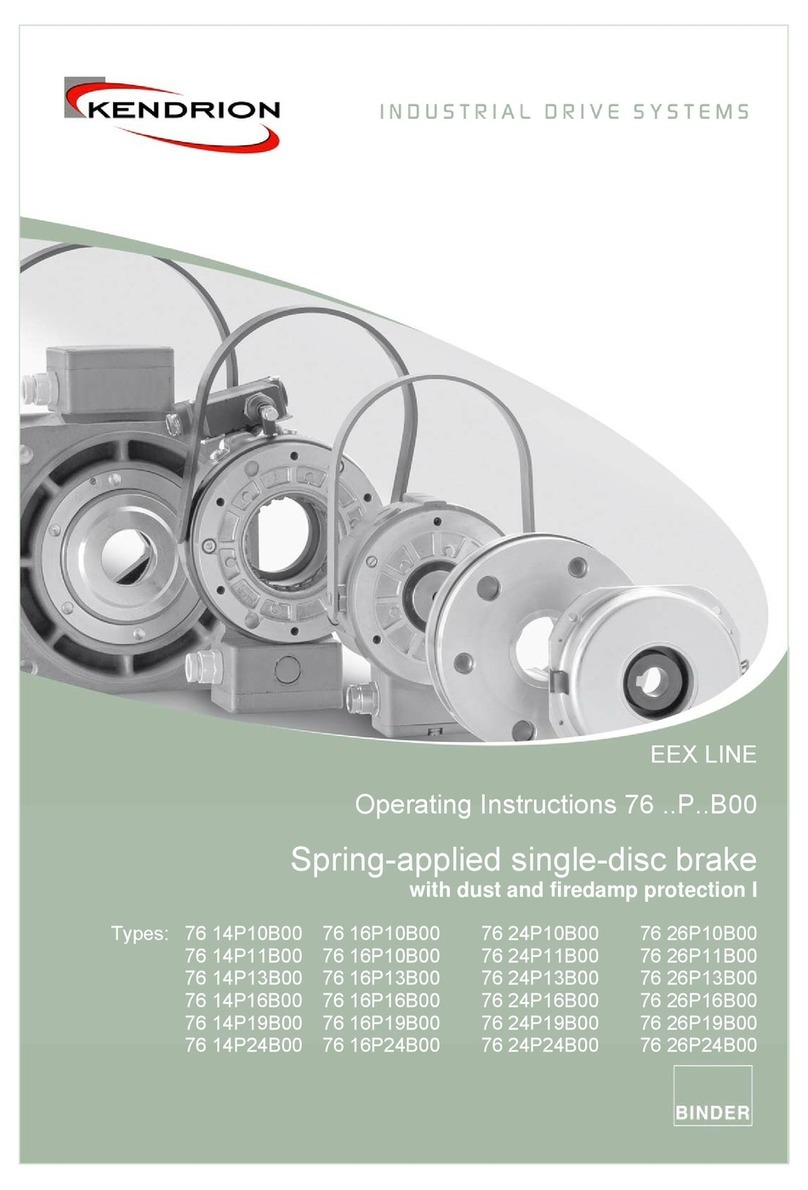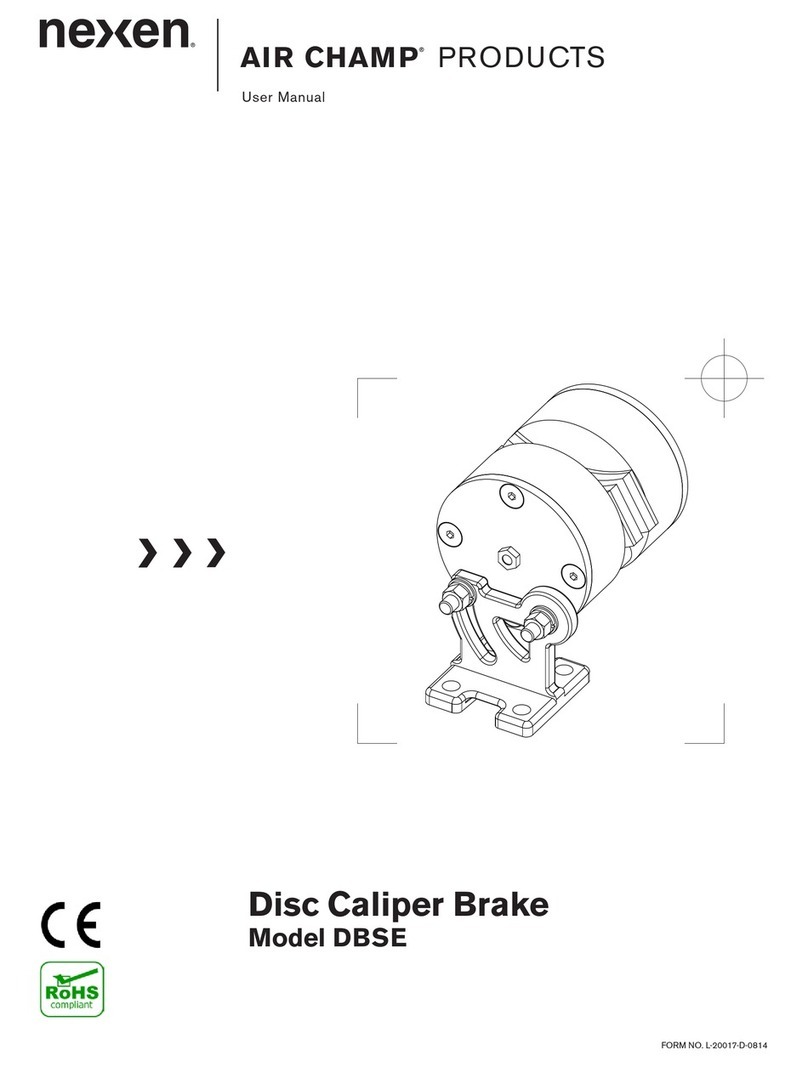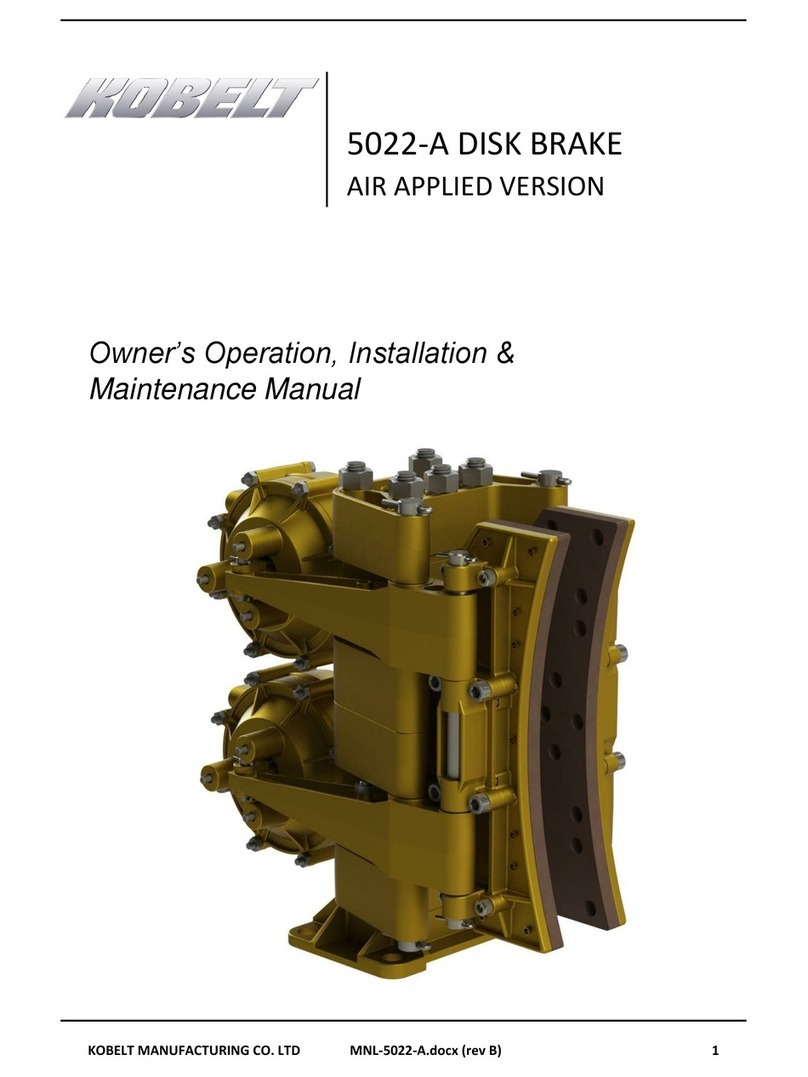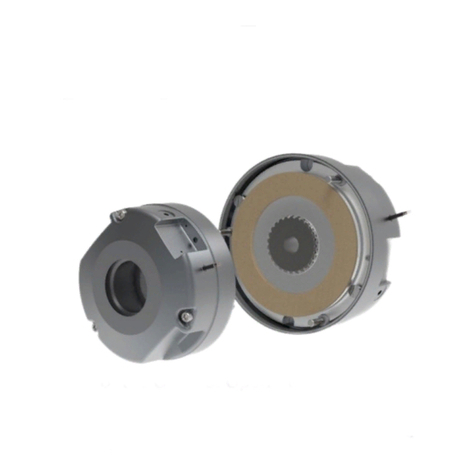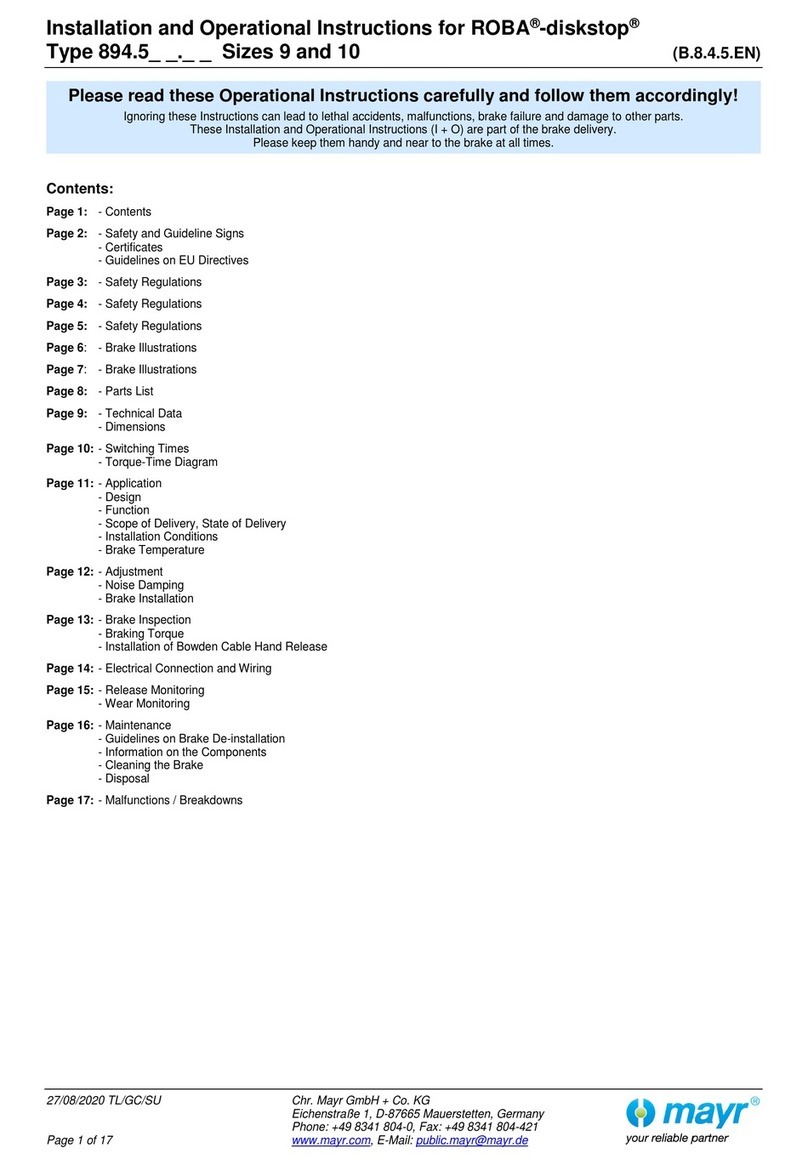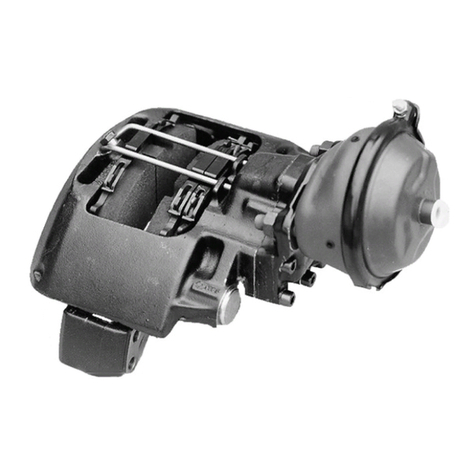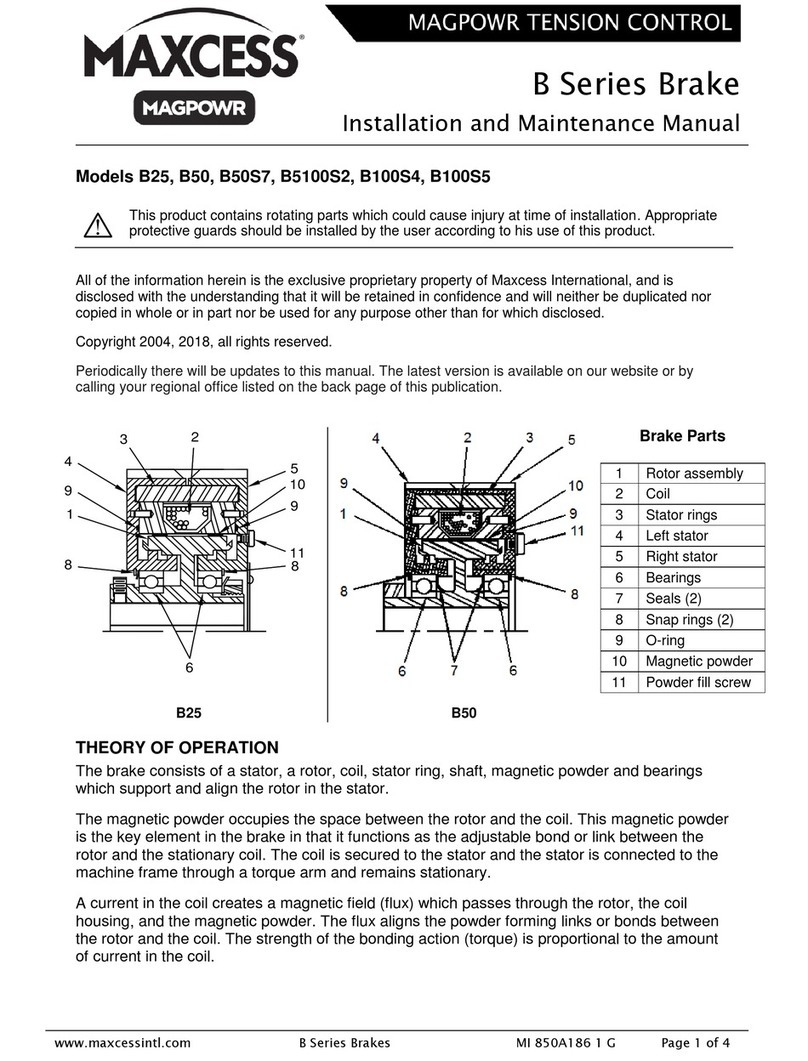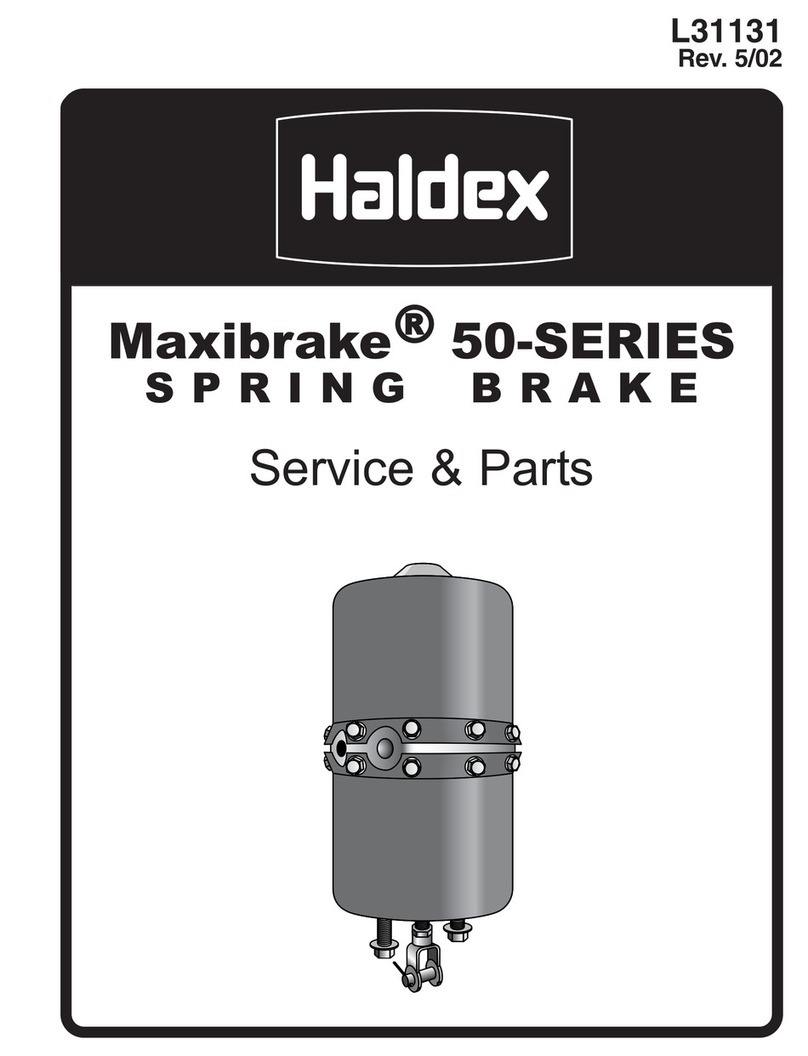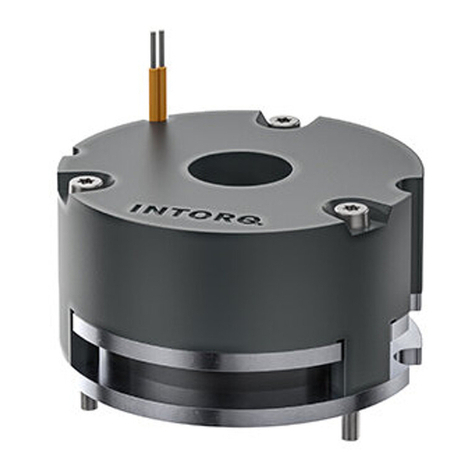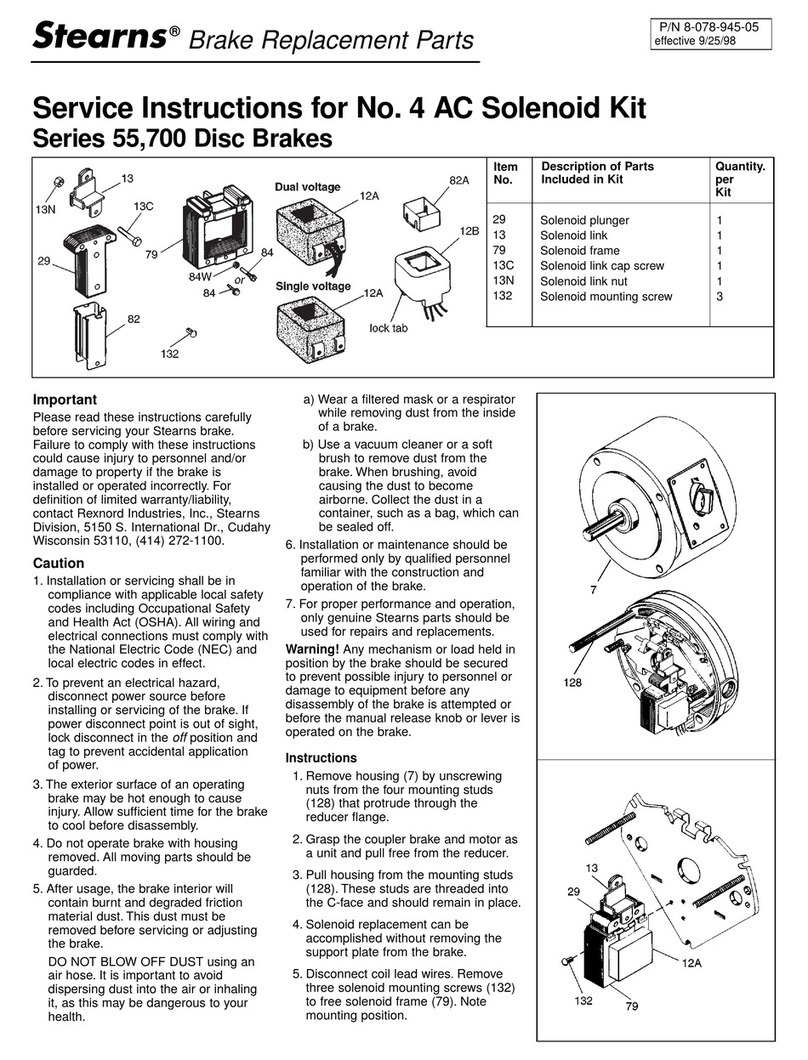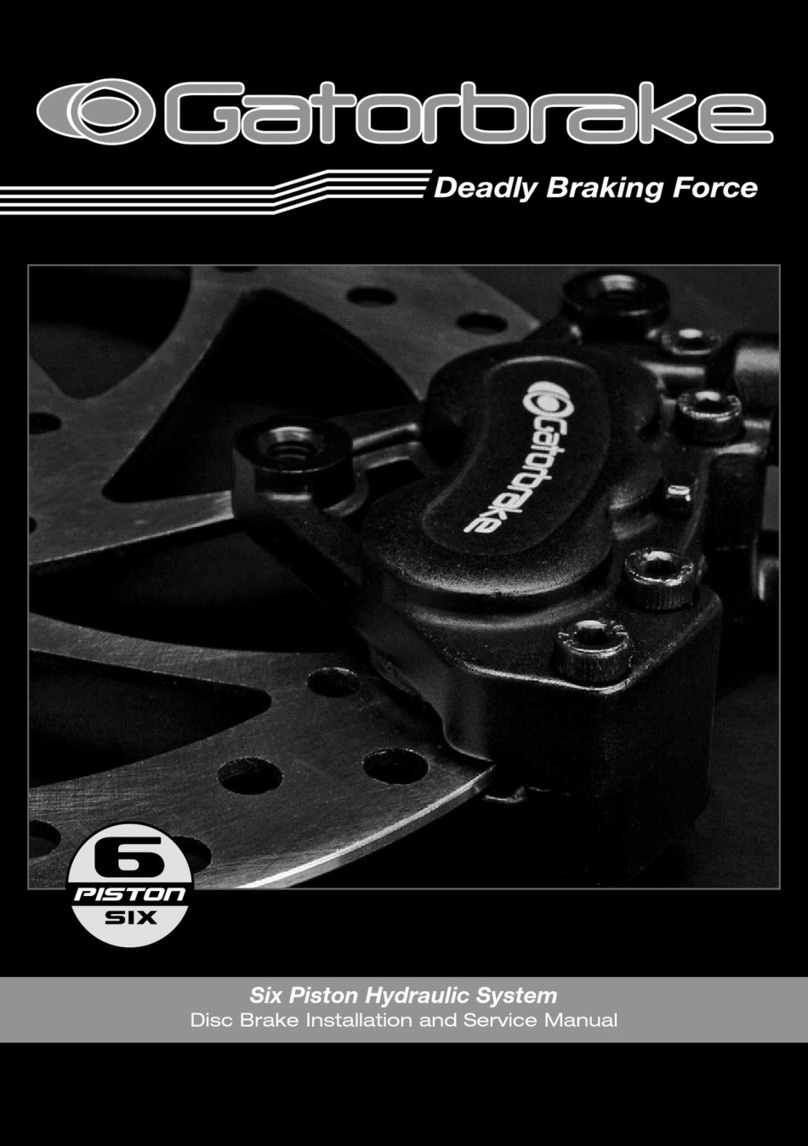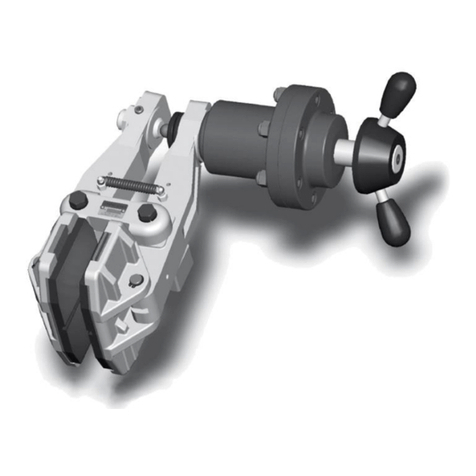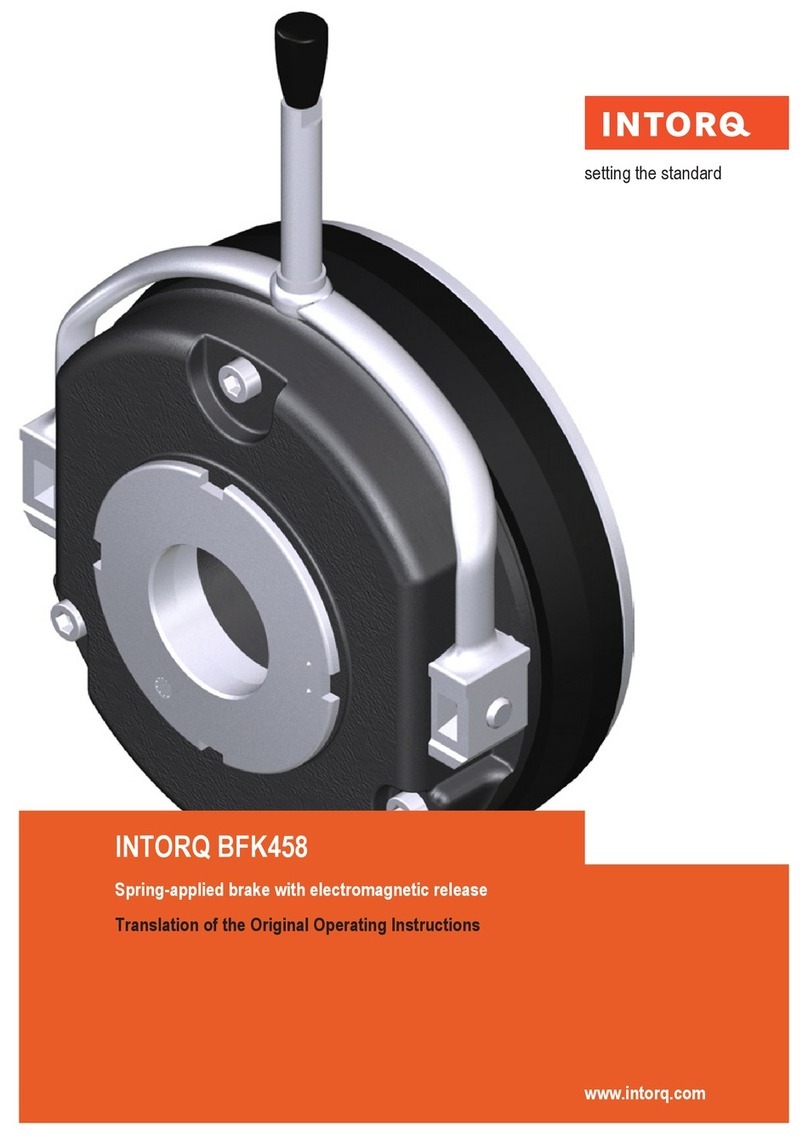
7 Electrical installation ............................................................................................................................................... 56
7.1 Electrical connection .......................................................................................................................................... 56
7.2 AC switching at the motor – extremely delayed engagement ............................................................................ 57
7.3 DC switching at the motor – fast engagement ................................................................................................... 58
7.4 AC switching at mains – delayed engagement .................................................................................................. 59
7.5 DC switching at mains – fast engagement......................................................................................................... 60
7.6 Minimum bending radius for the brake connection line...................................................................................... 61
7.7 Bridge/half-wave rectifier (optional).................................................................................................................... 61
7.7.1 Assignment: Bridge/half-wave rectifier – brake size.............................................................................. 62
7.7.2 Technical specifications......................................................................................................................... 62
7.7.3 Reduced switch-off times ...................................................................................................................... 63
7.7.4 Permissible current load at ambient temperature.................................................................................. 63
8 Commissioning and operation ............................................................................................................................... 64
8.1 Protect the electrical connections against any contact or touching.................................................................... 64
8.2 Function checks before initial commissioning .................................................................................................... 65
8.2.1 Function check of the brake .................................................................................................................. 65
8.2.2 Release / voltage control....................................................................................................................... 65
8.2.3 Testing the hand-release functionality................................................................................................... 66
8.3 Commissioning................................................................................................................................................... 67
8.4 Operation ........................................................................................................................................................... 68
8.4.1 Brake torque reduction (for the optional adjustable braking torque)...................................................... 69
8.4.2 Operating procedures............................................................................................................................ 69
9 Maintenance and repair........................................................................................................................................... 70
9.1 Wear of spring-applied brakes ........................................................................................................................... 70
9.2 Inspections......................................................................................................................................................... 72
9.2.1 Maintenance intervals............................................................................................................................ 72
9.3 Maintenance....................................................................................................................................................... 72
9.3.1 Checking the components..................................................................................................................... 73
9.3.2 Check the rotor thickness...................................................................................................................... 73
9.3.3 Checking the air gap.............................................................................................................................. 74
9.3.4 Release / voltage................................................................................................................................... 74
9.3.5 Adjusting the air gap.............................................................................................................................. 75
9.3.6 Replace rotor......................................................................................................................................... 75
9.4 Spare parts list ................................................................................................................................................... 77
10 Troubleshooting and fault elimination................................................................................................................... 80
INTORQ | BA 14.0217 | 09/2019 7
